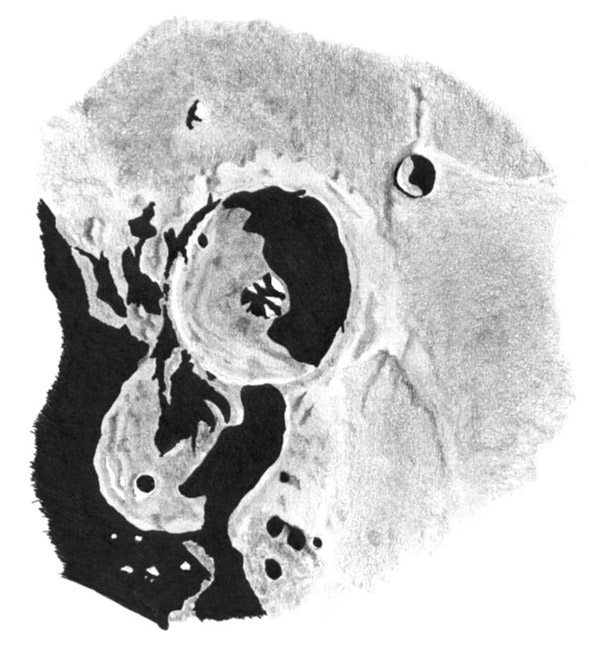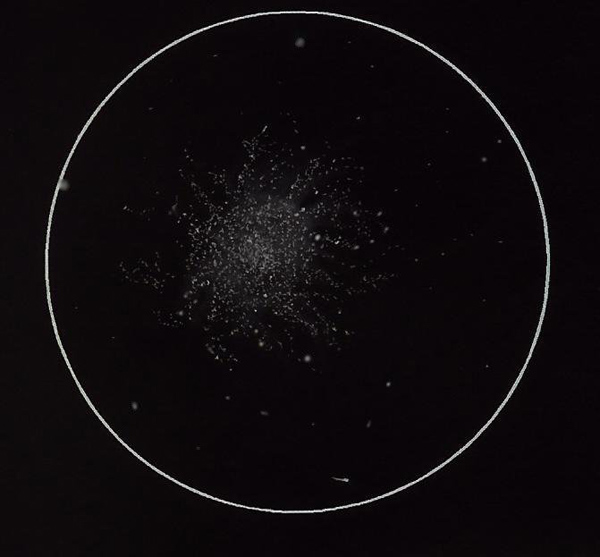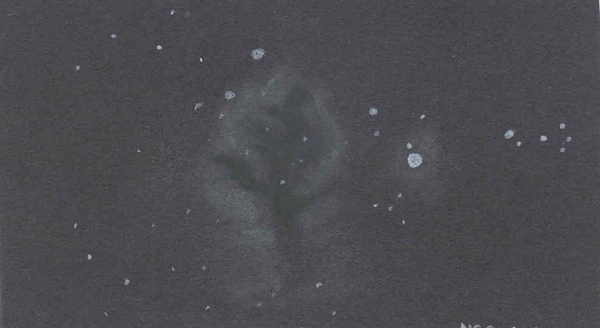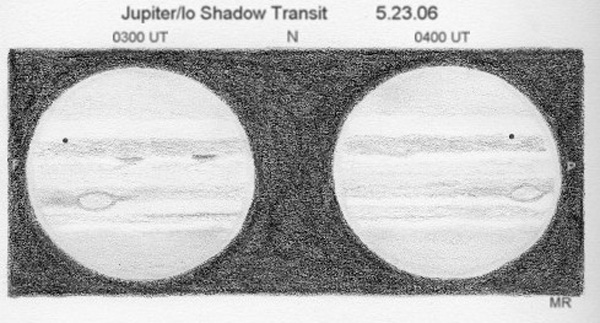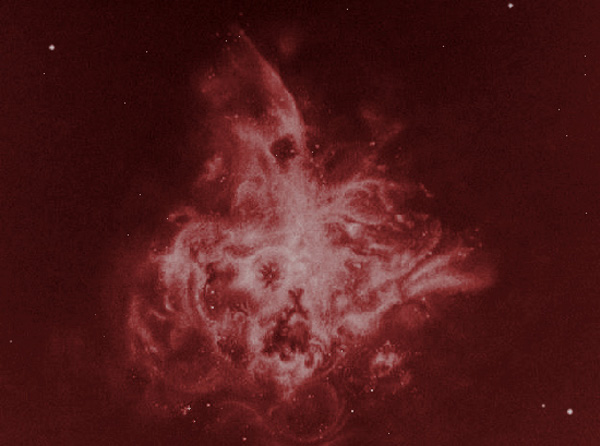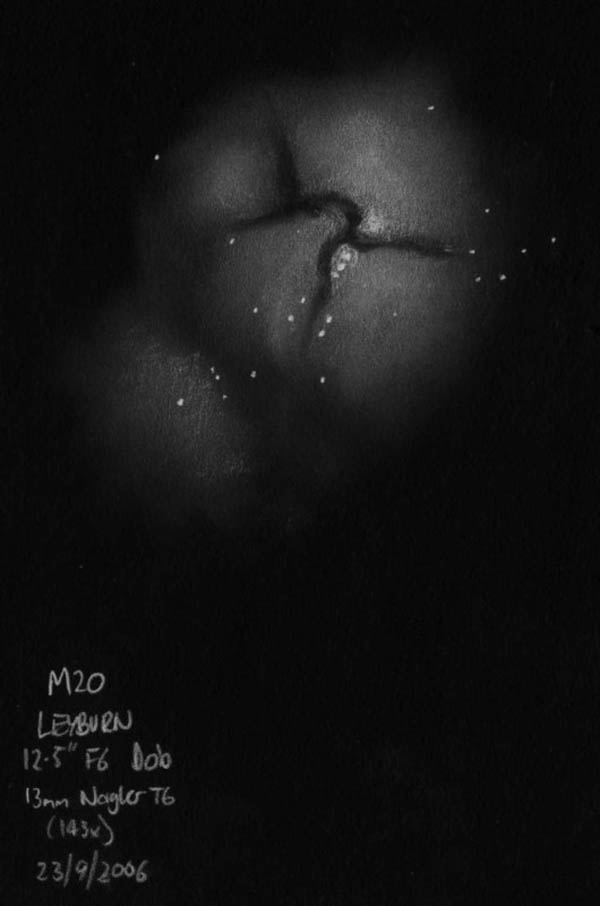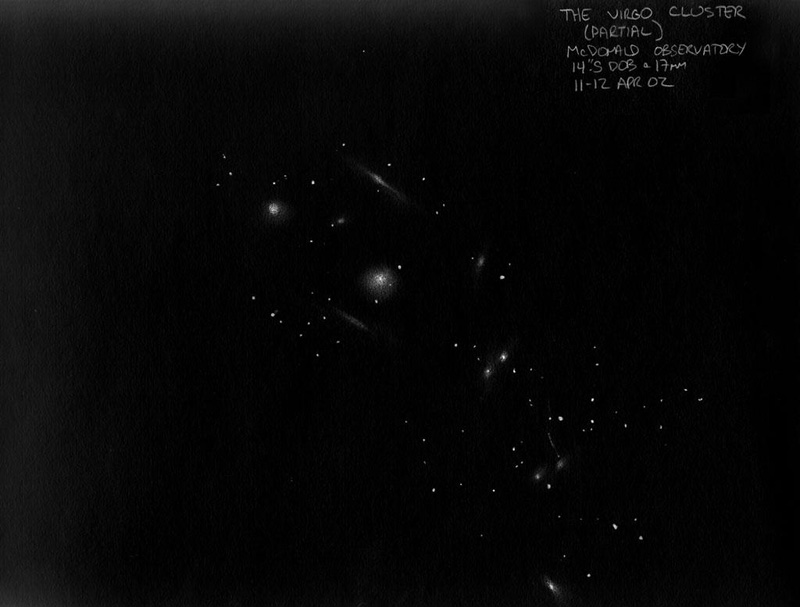Theophilus and Cyrillus at Sunrise
Sketched over a 1.5 hour period at the eyepiece on Sunday April 22,
2007. (2:30 to 4:00 UT 23/04/2007) More time spent afterwards
colouring in shadow regions etc. Done with graphite pencils (4H to
4B), black ink and whiteout on white paper. Scope was Celestron
9.25, binoviewer, 2x barlow, and 24mm eyepieces. Picture was
reversed left to right once scanned to give a upright and correct
left/right view.
At the public star party last month (March) with the moon at the same
phase, I used a similar scope setup trained on these same craters to
illicit some “oohs” and “wows” from the crowd. After spending most of
the time looking at these craters I realized that the pair was quite
‘photogenic’ and would make for a nice sketch. This month, they were
even more strategically placed to reveal the terrain. The smaller
crater Madler was also quite interesting and included. One thing that
made this sketch a bit out of the ordinary was the unusual interior to
Cyrillus which has some unusual landscapes near the border with
Theophilus. The light and shadows between Theophilus and the terminator
was also unusual and complicated. My first sketch in over a year; it
seems I’m slowing up. Taking this much time to capture all the details
is not the best for accuracy on transient lighting on lunar features.
Gerry Smerchanski

